 |
 |
 |

|
|
 |
| Volume VII, Number 5 |
The Renault Story in Small-Scale - The Roadcars |
Their first car was directly driven so no belt or chain was used. This was a great advantage in racing and rallying on the bad roads in those days. It was known to the brothers that victories delivered their brand a good name in speed and reliability.
During the First World War, the north of France was occupied by the Germans. To prevent them from bringing a visit to Paris the not so welcome visitors needed to be stopped. A quick move of a lot of troops was needed. The entire Paris Renault taxi fleet brought soldiers to the river Marne for battle. The French could resist the Germans and the Renault name became famous. Over a thousand taxis were built and they where not only in service in Paris but also in London and New York.
By this time, Renault was the biggest French manufacturer. But times got heavier for Renault as a big charismatic industrialist started to build cars. His name was Andre Citroën. Until the Second World War not much happened except for the competition with Citroën.
To save his factory in the WW II Renault had to make the hard decision to cooperate or give the Germans his factory. He decided for the cooperation but slowed down the work as much as possible. The allies bombed the factory several times. When the war was over Renault was taken prison for cooperation with the Germans and died a few years later.
The Renault factory was nationalized and went on building cars. They still do so today. They designed and built real classics like the R4, the 16, the 5 Le Car as well as the trendy Espace. Together with a lot of success in motor sport, trucks and farm equipment, the result has been a world brand. All over the world factories have been built.
Renault has competed mainly with its French rivals. They copied Renault cars or gadgets and Renault copied their cars or ideas. Maybe not copy but at least look at them very closely. Luckily, above all, Renault has stayed very French.
For us as toy collectors the mid sixties are the first years of small-scale Renaults. This story is divided into sections. More stories will follow. This story shows the Renaults in chronological order pictured with the toys I know to exist. There will surely be more as Renault is so widely known.
No prewar cars have been modeled. The first toys are the tiny Fregates from the Solido Mosquito range and the Dauphine from CIJ. The CIJ brand had a strong link to Renault as the only modeler allowed to reproduce postwar Renaults. In the mid fifties this link was loosened and other brands could model Renaults to. Siku had two Renaults in its plastic range the 4CV and the Dauphine. Both are hard to find.
The famous and bestselling (8 million cars upon 1992) Renault R4L was
designed to compete with Citroens 2CV. These two cars became the cars that
put France on (postwar) wheels, and became the worldwide symbols of France.
The Norev 4L captured the cars looks and characteristics very well. This
model makes you so greedy to have all colors and versions. Accept the dozen
normal colors a gendarmerie (police), a PTT and a sapeurs pompiers (fire)
car exist. Is the Norev already very nice detailed, the AHC/Pilen model
from Spain made in the mid 80s is even more beautiful. It was produced for
the Dutch market as a promotional for the Dutch AAA named ANWB as part of
a set of four different vehicles used until then. Polistil of Italy also
produced one but it has a bit large wheels which spoil the looks. In the
80s Majorette produced a JP4 Rodeo version complete with surfboard. If you
find one be sure the surfboard is not missing. The commercial version of
the 4L also became very popular in Europe. The well known and nice Majorette
version cannot fail in any toy collection. Globe Toys used Majorettes tools
to produce their own R4F. The F stands for Forgonette, light van. Guiloy
of Spain also did the 4F model in slightly smaller scale than the Majorette
example. The Japanese Tomica produced it to. An ambulance version is from
Mira (Spain). As you can see, this one has made many trips to the hospital.
The R4L is a strange choice for an ambulance. It is slow and far too small
to lay down, but comfortable.�
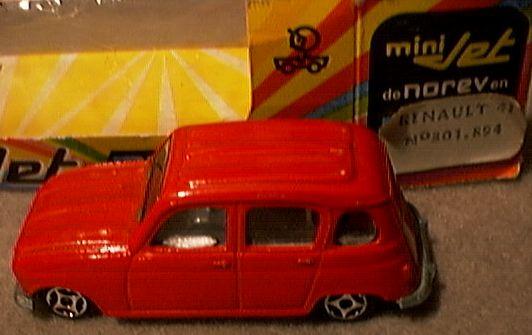 4L - Norev |
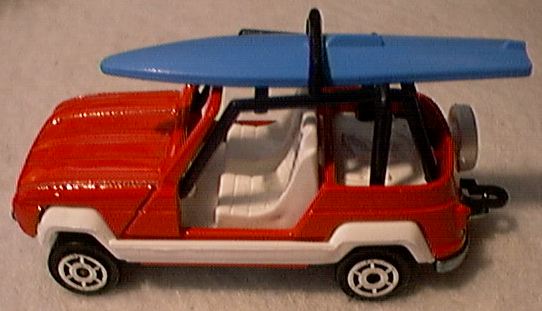 JP4 Rodeo - Majorette |
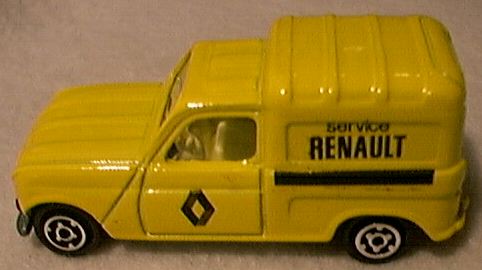 �R4 Forgonette - Majorette |
In 1965 the famous 16 was introduced. This was the first hatchback in the luxury class, complete with a flexible interior. This means that the back seats could be folded down or up for more luggage space. Majorette produced as one of their first models, a Renault 16. It has an opening bonnet and doors. It looks better then the Polistil version due to the more realistic wheels. The 1970 R6 was a car that had the looks of the R4 but was a bit bigger and more comfortable. Polistil and Guisval made models that are both not easy to find.
The 12 was also introduced in 1970. This car was bigger and popular. They were build well into the 80s across the globe and can still be seen on the roads today. Polistil and Norev made the sedan versions as Guisval and Buby made the break or station wagon. For the sedan, again the Norev looks better than the Polistil. The Guisval break looks good. The Buby from Argentina is hard to find.
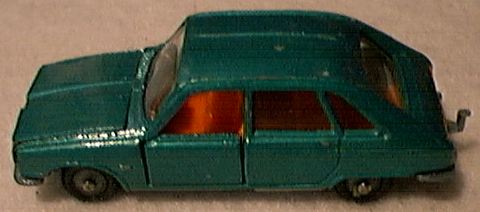 16 - Majorette |
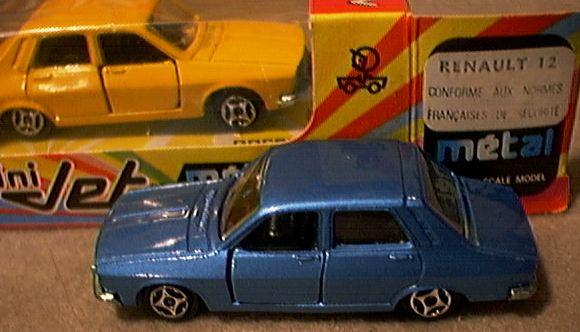 12 - Norev |
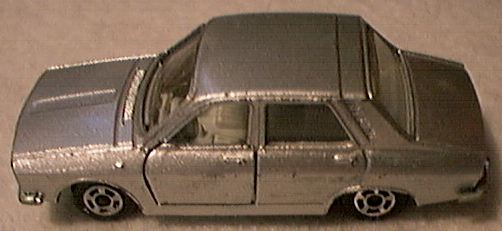 12 TL - Polistil |
 12 Policia - Buby |
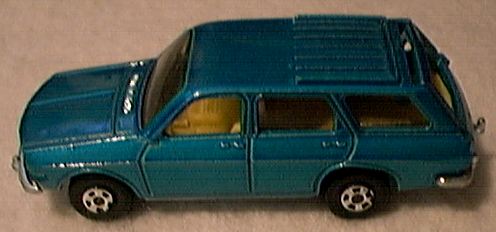 12 Break - Buby |
 17 TL - Norev |
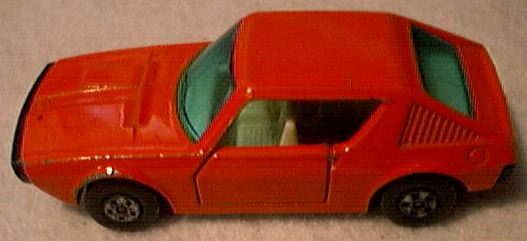 17 TL - Matchbox |
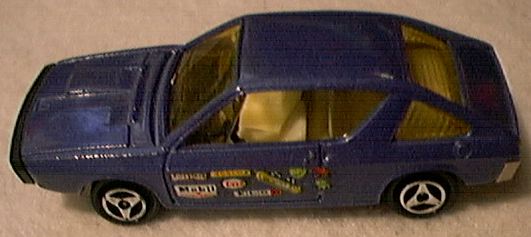 17 TS - Majorette |
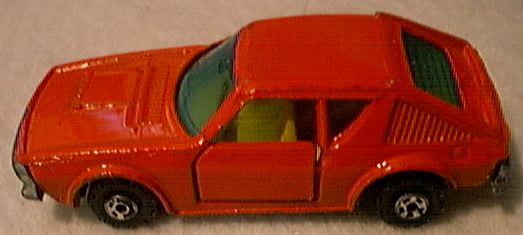 17 TL - Polfitoys |
The 14 was introduced in 1976. Not everybody liked this car with its very smooth lines. Norev produced the only model and did that very well. Although the wheels are a bit small and the car has no opening part.
 30 TL - Norev |
 14 - Norev |
 18 - Norev |
The last car for the first story is the 1978 R18. This car has the smooth lines too. Norev, Guisval and Majorette made models of the sedan. The break was not modeled. The Majorette carries a taxi sign or carries an aerofoil and is towing a Caravan named St. Tropez. It makes you want to go on holiday. The yellow taxi has been favorite toy since my childhood. The Guisval is heading for the French Alps as it is carrying skis. And Buby took care of the traffic by adding a police car.= The Norev has no features and can only be rolled across the floor.
 18 - Guisval |
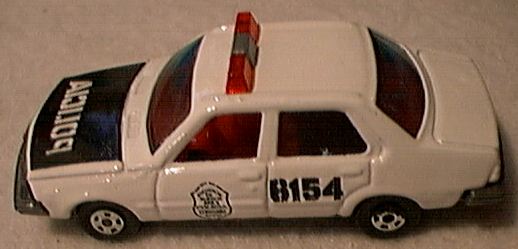 18 police - Buby |
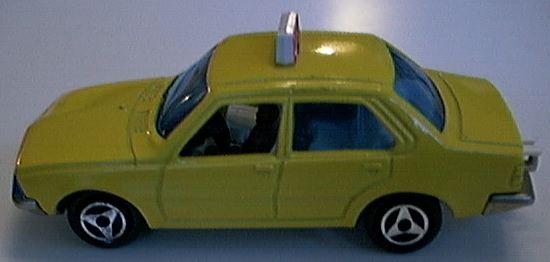 18 taxi - Majorette |
|
HOME>>
|
|